Key Points
- To the degree you can stand it, you should usually be as aggressive as possible with your 401(k) allocation, and your investments generally.
- There are those who are really uncomfortable with investing aggressively, even when they're young.
- Unfortunately for those people, there's really not a better option--and the threat of losses is often far worse than perceived.
Conventional wisdom says that, in your younger years, you should be investing as aggressively as possible as long as it's not beyond your comfort level.
That conventional wisdom is certainly true for retirement accounts like 401(k) plans. Early on, and maybe even later on as well, you want an aggressive 401(k) allocation for a number of reasons.
First, you won't be using that money anytime soon. So if the market dips or dives, it should not affect you, or at least it won't affect your day-to-day living. This is why, in general, retirement accounts should take on more risk than taxable accounts due to their longer time horizon.
Second, and very much related to that, most people with 401(k)s are contributing to them on a regular basis: At the end of each pay period, to be exact. You'll be buying when the markets are roaring, but you'll also be buying when they're in the doldrums. That's a sort of mechanical dollar cost averaging strategy that's so simple it can barely be called a strategy, but one that most of us would benefit from.
Most investors tend to dial down the aggressiveness of their investments the older they get--and not just their 401(k)s (which generally turn into rollover IRAs eventually). That's because you don't want to be retired or heading into retirement right when the securities markets turn against you. Also, once you get to 59 1/2, you're able to start drawing down on your qualified accounts without penalty. If you're counting on that money, you want it to be there. In other words, you don't want it cut down by a bear market.
You can run scenarios on various asset allocations in the WealthTrace Retirement & Financial Planner to see which asset allocation maximizes your chances of a secure retirement. Sign up for a free trial today to view your retirement projections.
Looking Ahead
We used the WealthTrace Planner to run a case study in having a more aggressive 401(k) allocation. Consider a single person, age 34, looking to retire at 68, with annual retirement spending projected to be in the $70,000 range. She has about $1.5 million split between taxable and qualified accounts, with about a quarter of each account in value stocks, with the rest spread across bonds of various durations. She contributes $5,000 annually to her 401(k).
With this asset allocation, things are not looking great for our hypothetical investor on a Monte Carlo basis:
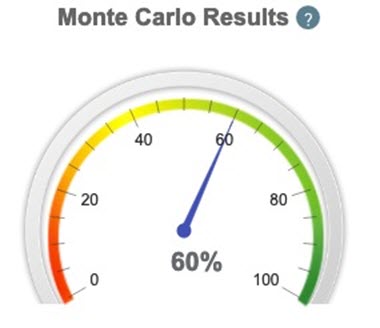
You may have raised your eyebrows a bit at that asset allocation above because it looks excessively conservative for someone so young. But these folks are out there: They don't like market crashes, or they don't trust the stock market, or, for any number of other reasons, they just don't want to be in equities.
That's a mistake. With inflation back and bonds still stuck with paltry returns, the 'TINA' (There Is No Alternative) phenomenon--which basically says you really have to be largely invested in stocks--is still in effect.
In this investor's case, the plan more or less holds steady until salary income stops, and then collapses over the next 20 years, leading to that Monte Carlo result above.
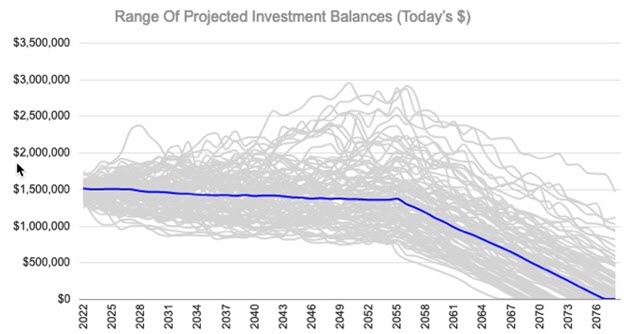
There's no great mystery to this. With all of those fixed income investments, her projected annual return is only in the 3.5% range. If inflation averages 2.5% or 3% annually, her spending will eventually outstrip her savings.
Looking For Compromise
Without a job that pays a lot more or a major reduction in spending, our investor is simply going to have to bite the bullet and accept more volatility in her investments.
But not necessarily forever.
If our investor will instead go with an 80% equity / 20% bond allocation for now . . .
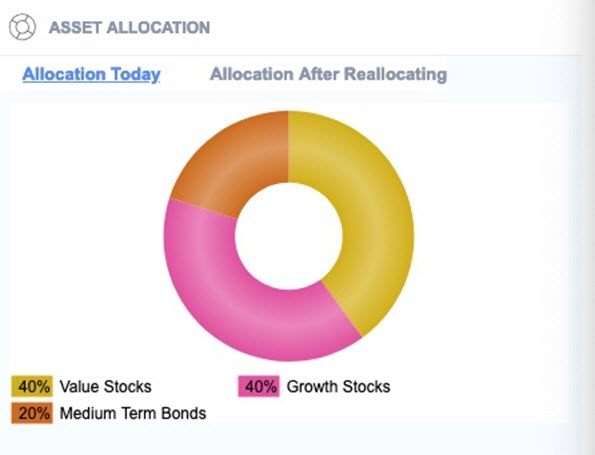
. . . . but then goes to a 60% bond / 40% equity allocation at retirement . . .
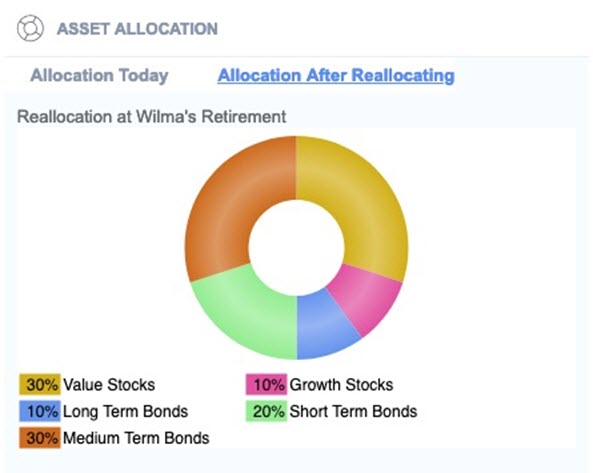
. . . .things look a lot better from a Monte Carlo perspective:
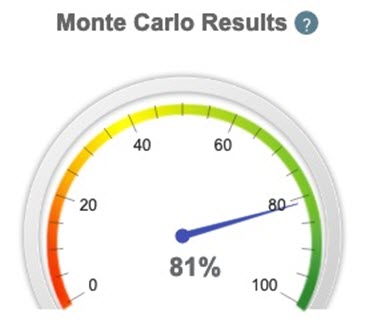
As we mentioned above, the time for higher-risk investments is when you're young, when you can get the money compounding early. Despite countless innovations on the investment landscape over the decades, no one has ever found a way around this.
Inputs and Outputs
There are plenty of other factors that will affect a plan, of course. We have not talked about Social Security and pension payments, for example, which can make a huge difference.
Our investor could also probably save a bit more than just $5,000 a year and see a big payoff from that, especially if she goes with the higher equity allocation. Conversely, larger expenses that come and go--mortgage payments, college tuition funding, insurance premiums--can pull down a plan's potential for success.
Our larger point, though, is that if you're going to save and invest your money as a younger person, you should make those good habits count by putting the funds to work in the greatest creator of wealth ever devised: the equity markets.
Do you want to figure out the asset allocation that sets you up for retirement? Sign up for a free trial of WealthTrace to run asset allocation scenarios and build your own retirement plan.